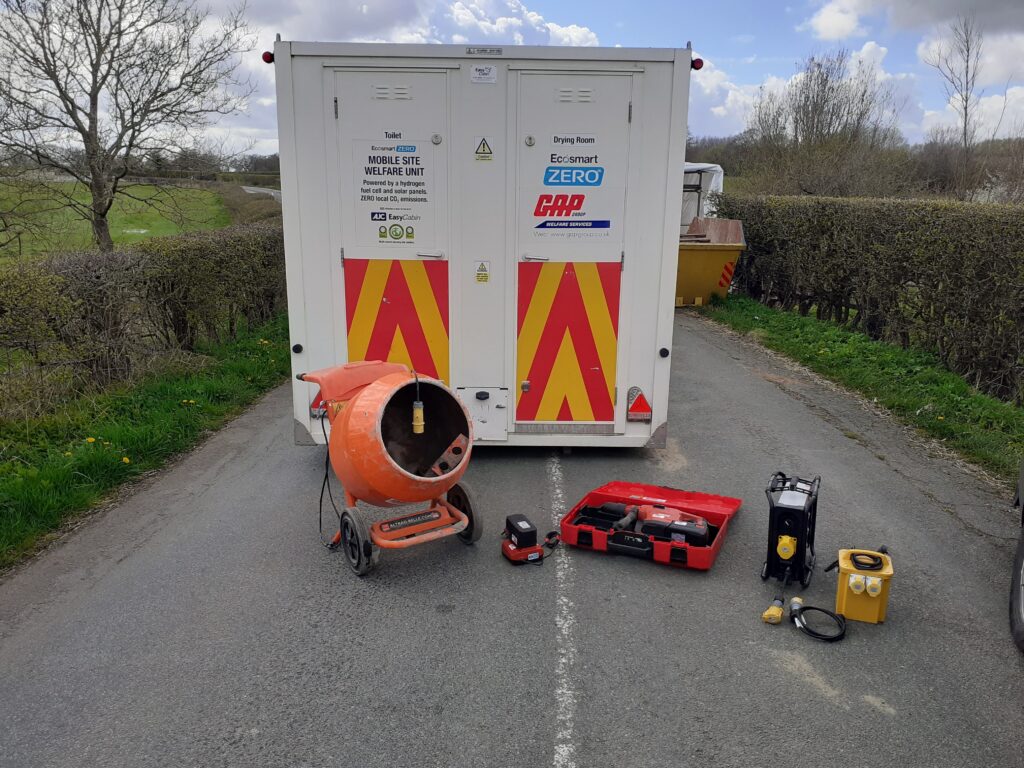Inside Cheshire East’s lower carbon highway service
Highly Commended at ADEPT’s President’s Awards in the Delivering Clean Growth category, Ian McLauchlan, Bridge Manager at Cheshire East service provider Ringway Jacobs, explains how eco-friendly practices and technology have been used to create an ultra-low carbon site, saving 2.3 tonnes of carbon.

Ringway Jacobs is committed to being carbon net zero by 2050 and Cheshire East Council is committed to being carbon neutral by 2045. At both company and team levels, we were set the challenge to reduce our carbon emissions so we started to look at what was in our power to change. We also passed on the challenge to our supply chain partners and their support in working with us on this has been invaluable. It was incredibly important to us that we didn’t just pay lip service to reducing carbon, but that we assessed every part of every scheme to see how we could all do things differently.
This is the approach we took with the Marthall Lane Bridge scheme. The bridge had been hit and damaged by a vehicle and reconstruction work was scheduled for April this year. We had already used a zero CO2 hydrogen and solar powered welfare unit on a number of other schemes and our first step was to get this on site. We used electric vehicles to commute to the site, which were charged overnight in the depot when electricity was at its lowest peak. We also streamlined and grouped deliveries to reduce the number of journeys being made to the site.
In our discussions with our central hire team, we found out about a suit-case sized battery pack that could power things like an electric cement mixer and other tools. At this stage the German company who made it, Instagrid, had only ever produced one for the American market where the voltage is different. We asked if they could make one for us and they did – to my knowledge it was the first one in the UK.
It was a game-changer. Not only was there no carbon being emitted but it was also completely silent, unlike traditional generators powered by petrol that also present spillage and fire risks. When the battery life was down, we plugged it into the hydrogen unit and it recharged overnight using electricity generated by the solar panels.
Damaged bricks were removed and taken away to be crushed and recycled. However, as well as purchasing new bricks, we were able to use a stock of old but usable ones left over from a previous scheme. As the bridge wall was three-layered, we used the new ones for the river side and road side faces, and the old bricks for the middle. Essentially that’s a whole pallet of bricks that didn’t have to be made.
We also took the coping stones off, cleaned them and put them back to retain the heritage of the bridge, and the wood to repair the fencing at each end of the bridge was sustainable. Time on site was reduced by encasing the scaffolding with recycled plastic, which meant that the bricks could be laid come rain or shine. It also acted as a barrier to stop things from falling into the river below.
As well as reducing our carbon, it was important that we protected the surrounding natural environment. This required a permit from the Environment Agency, for which we provided an ecology report that included bat and river surveys amongst other considerations. Mitigating measures were put in place prior to any work starting.
Supporting innovation is a key component of Ringway Jacobs’ ethos and we are very passionate about re-thinking how we run our schemes to reduce our carbon emissions, whether that’s through changing work practices or testing new technologies. And it doesn’t just end when the scheme ends. We are committed to sharing our learnings with the sector and have already presented to groups such as the Midlands Highways Alliance.
As well as being awarded highly commended in ADEPT’s President’s Awards, we have just won the Green Apple Environmental Award for 2023 and are in the running for the Steve Berry Highways Authority Innovation Award. With buy-in from colleagues, suppliers, partners and stakeholders we managed to save 2.3 tonnes of carbon just on one scheme – we are already looking at how we can reduce our carbon emissions even further on the next one. The scope of what’s possible if those savings are replicated across other schemes and other highways authorities is pretty phenomenal.
More local authority features:
How Essex County Council fuelled economic growth with energy retrofits
Image: ADEPT/Cheshire East Highways















